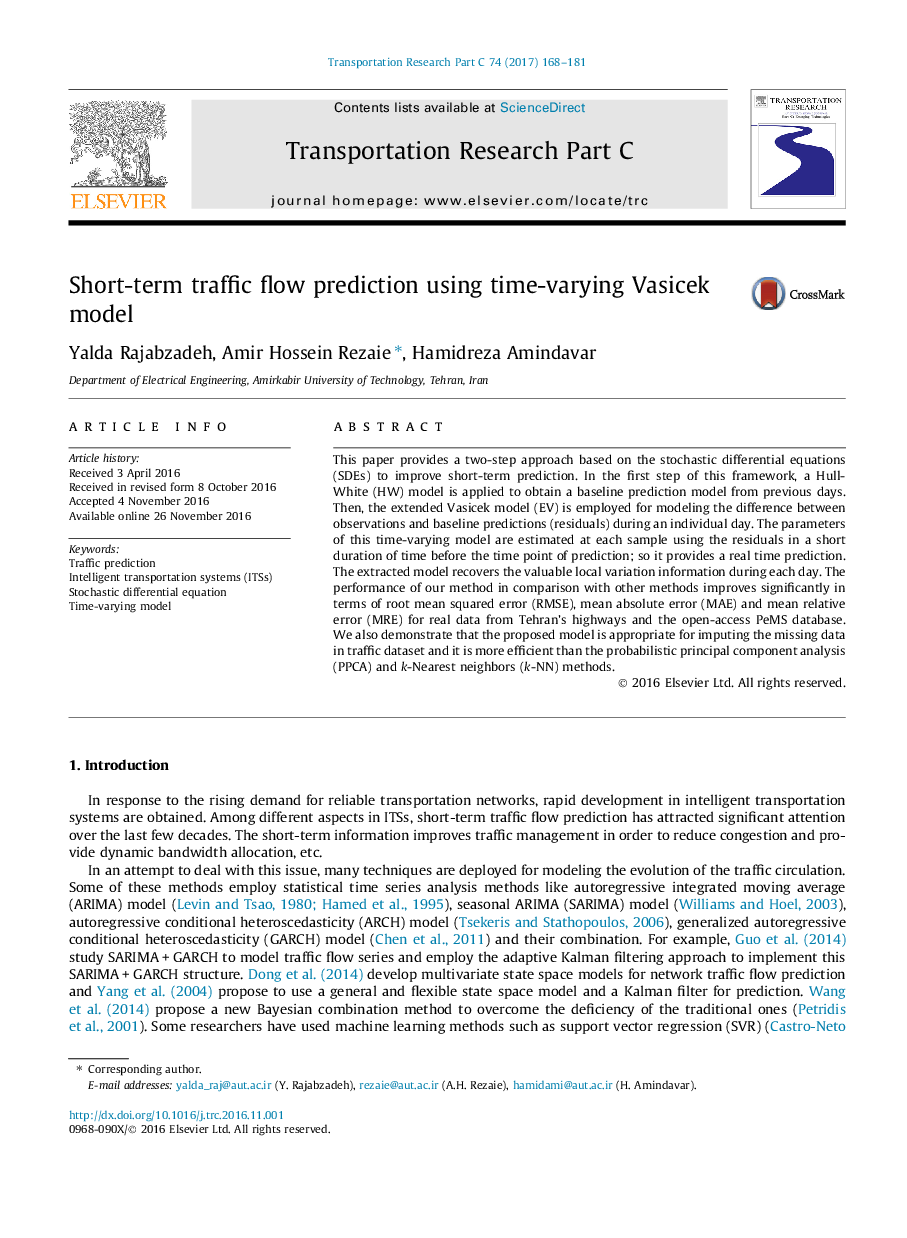| Article ID | Journal | Published Year | Pages | File Type |
|---|---|---|---|---|
| 4968585 | Transportation Research Part C: Emerging Technologies | 2017 | 14 Pages |
â¢We propose a two-step algorithm to predict short-term traffic flow prediction.â¢SDEs are employed to model historical data trends and the intraday residuals.â¢The new algorithm outperforms others specially in days with non-recurrent events.â¢We demonstrate the proposed algorithm is appropriate for missing data imputation.
This paper provides a two-step approach based on the stochastic differential equations (SDEs) to improve short-term prediction. In the first step of this framework, a Hull-White (HW) model is applied to obtain a baseline prediction model from previous days. Then, the extended Vasicek model (EV) is employed for modeling the difference between observations and baseline predictions (residuals) during an individual day. The parameters of this time-varying model are estimated at each sample using the residuals in a short duration of time before the time point of prediction; so it provides a real time prediction. The extracted model recovers the valuable local variation information during each day. The performance of our method in comparison with other methods improves significantly in terms of root mean squared error (RMSE), mean absolute error (MAE) and mean relative error (MRE) for real data from Tehran's highways and the open-access PeMS database. We also demonstrate that the proposed model is appropriate for imputing the missing data in traffic dataset and it is more efficient than the probabilistic principal component analysis (PPCA) and k-Nearest neighbors (k-NN) methods.
